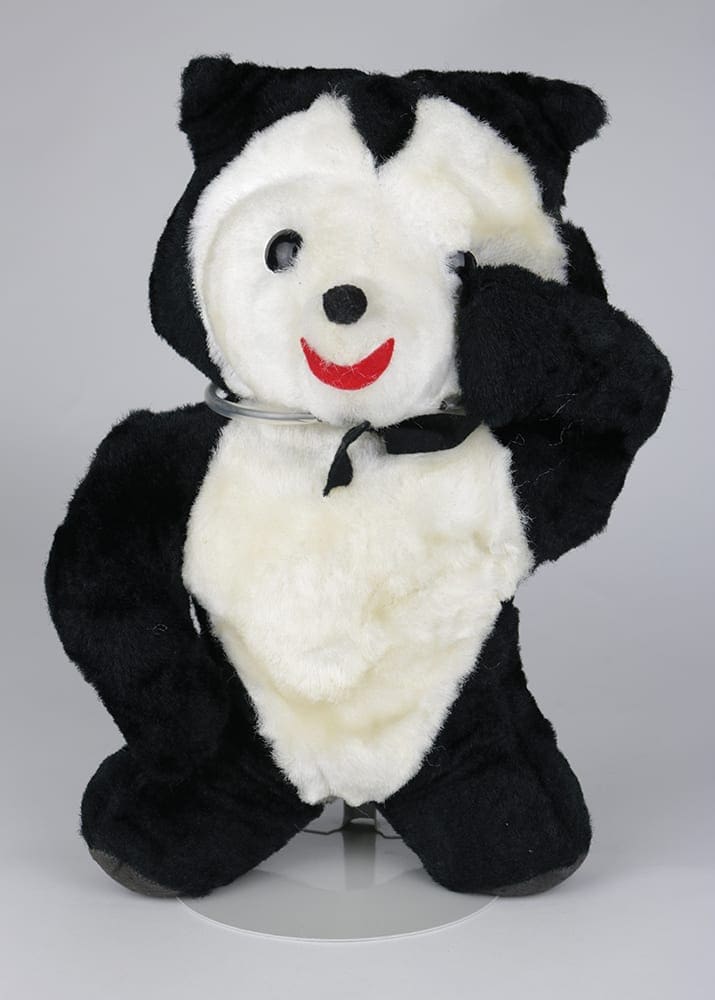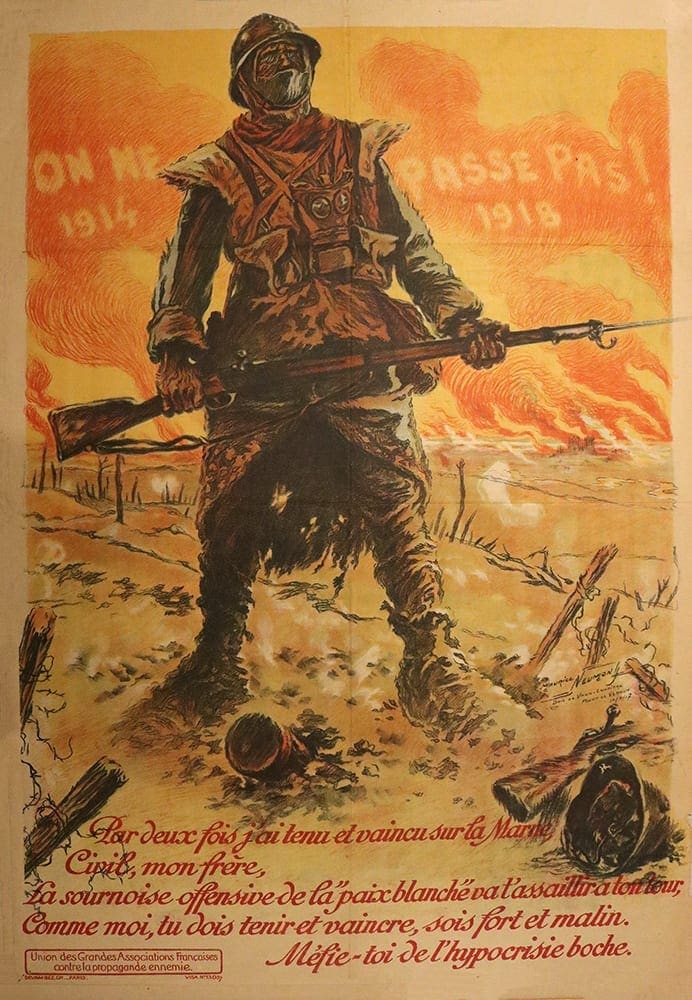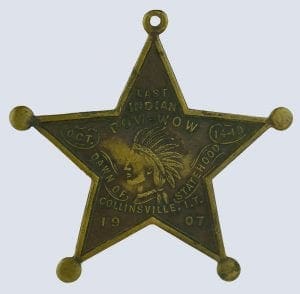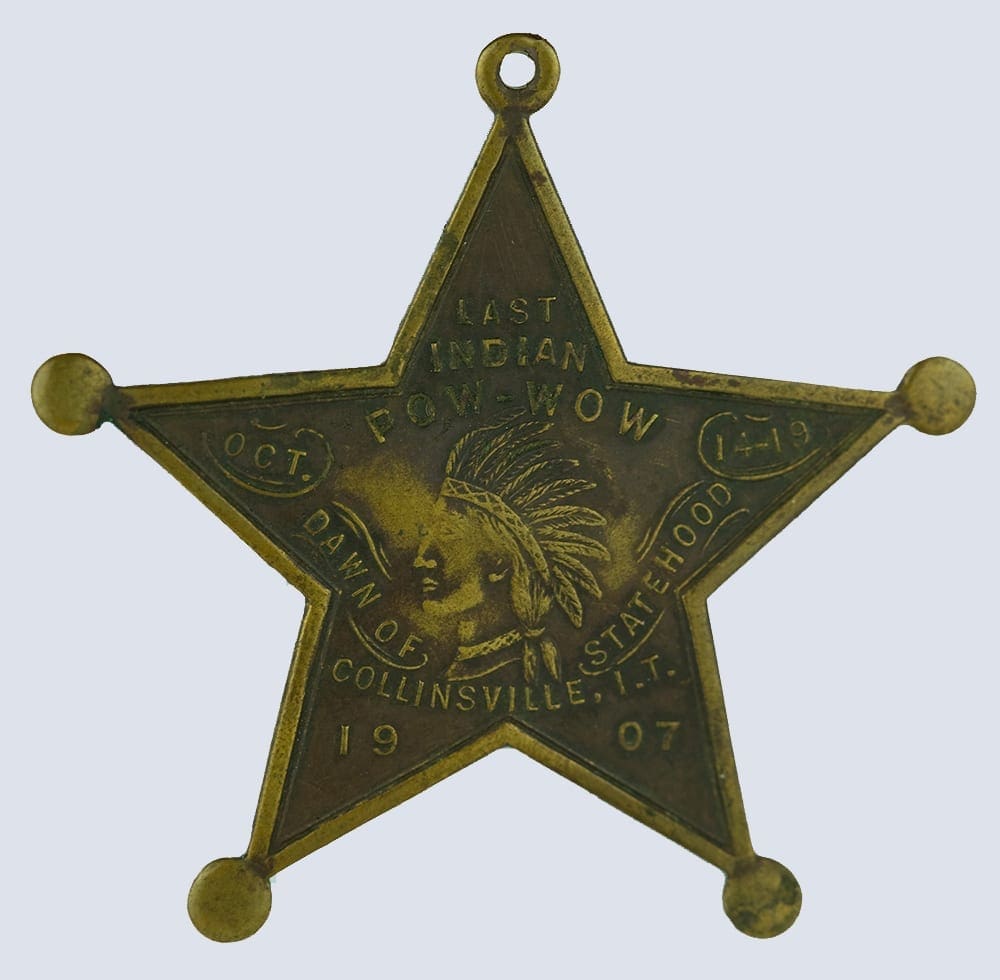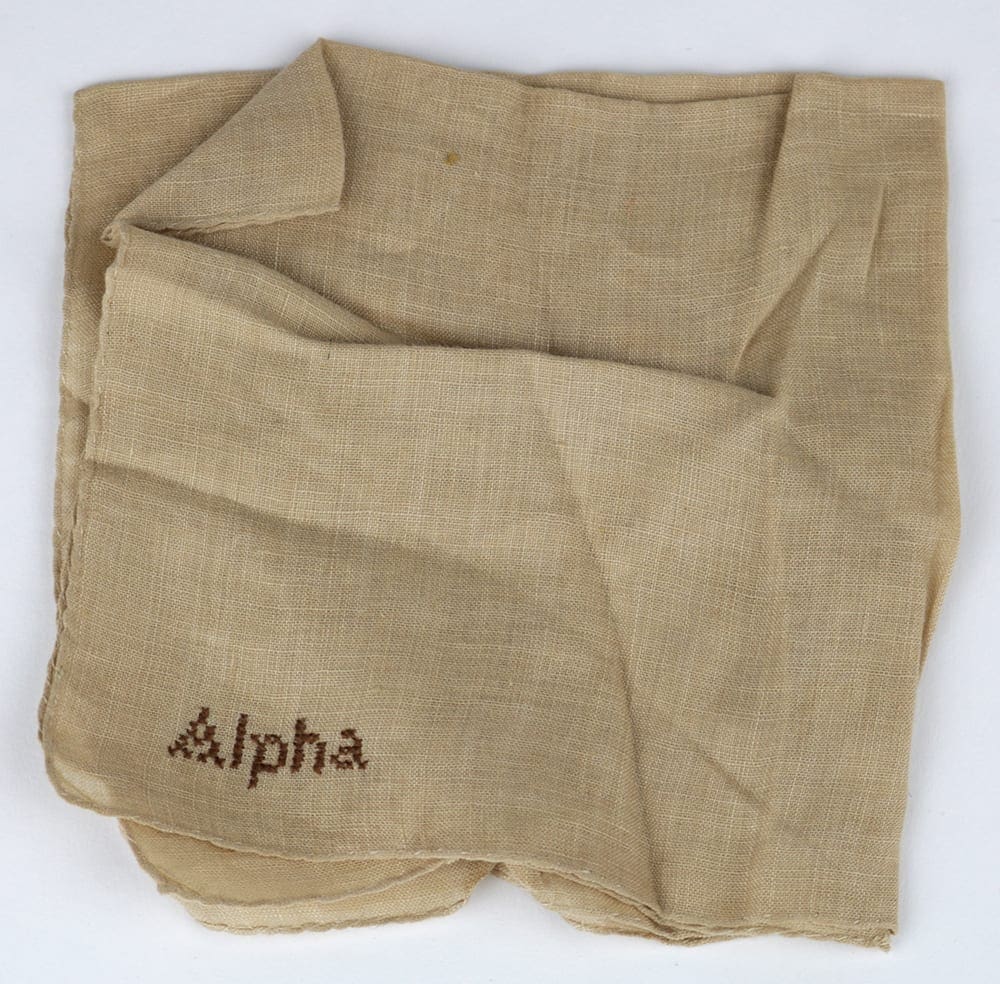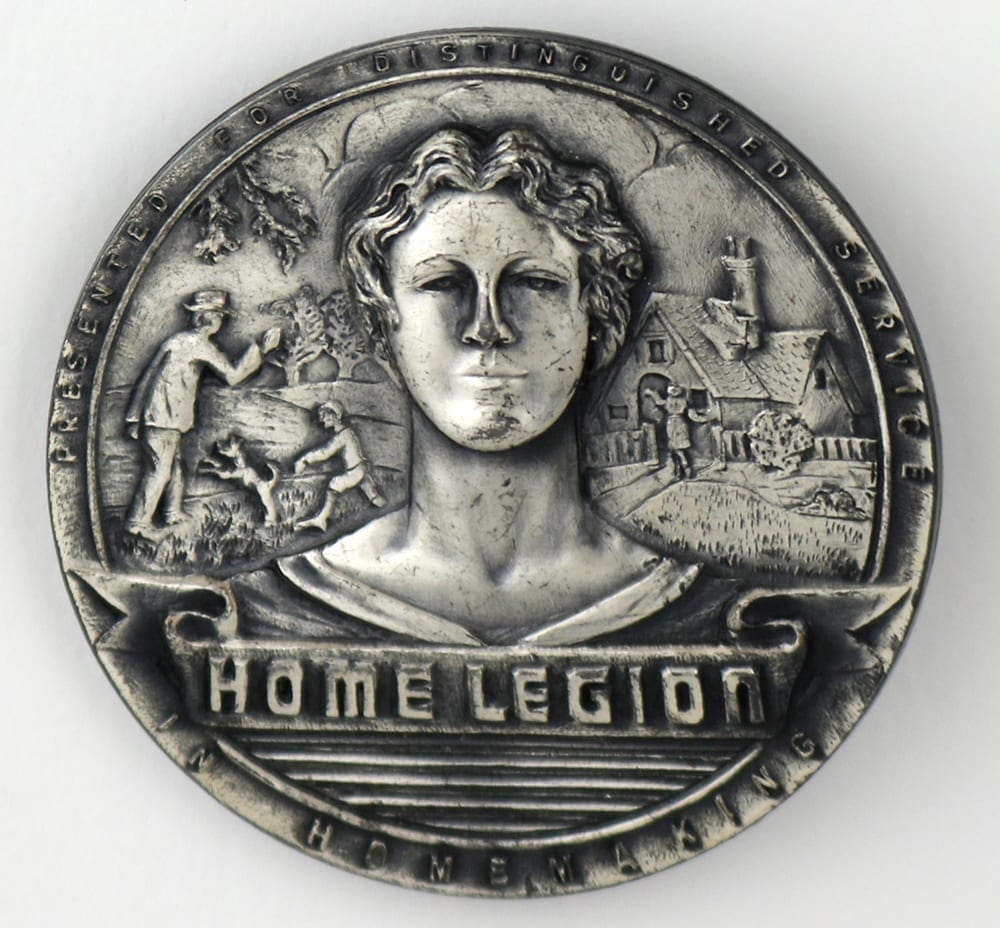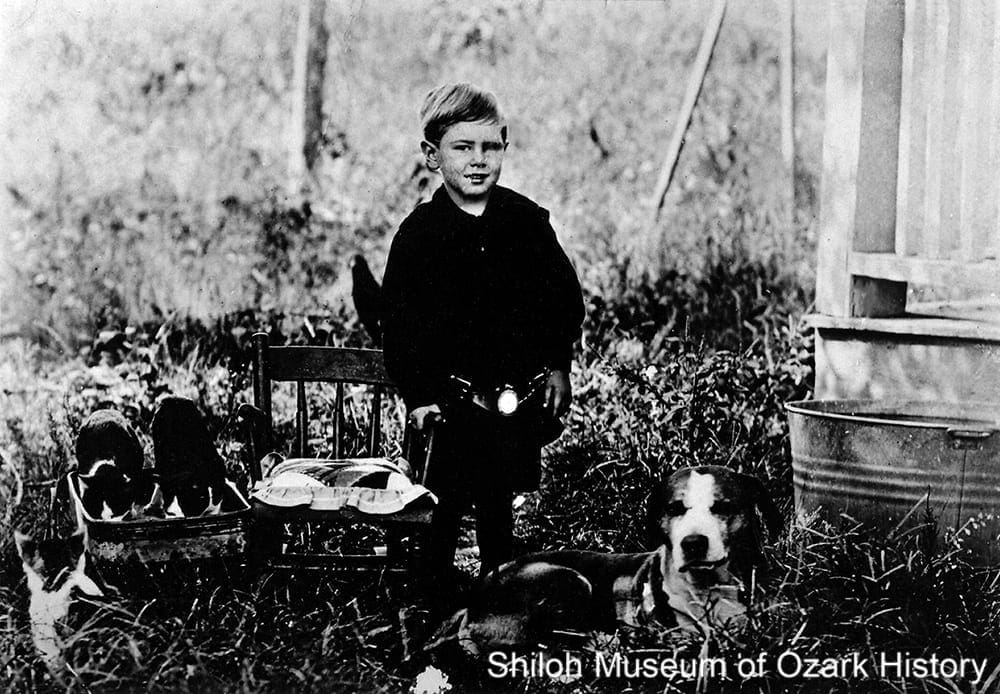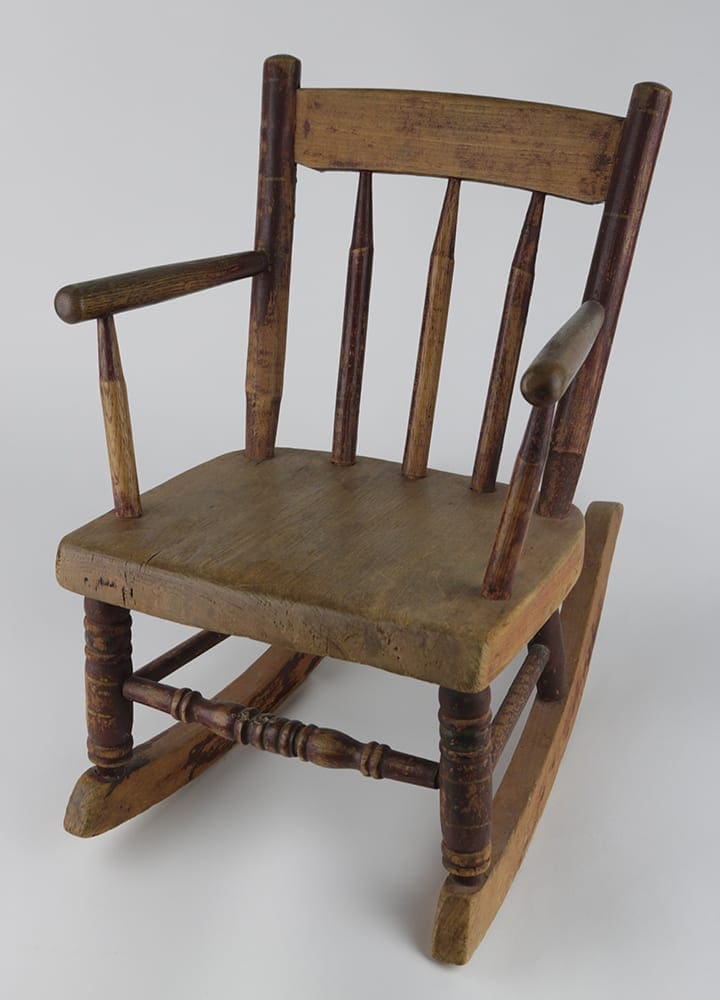Bear Brand Teddy Bear
This teddy bear was a marketing item for Bear Brand Hosiery Company. Founded in Chicago in 1893 as Paramount Knitting Company, the name was changed to Bear Brand in 1922. At first the company specialized in factory-made fleece-lined men’s socks, later branching out to include stockings for women and casual socks for the whole family.
In 1951, Bear Brand Hosiery opened a factory in south Fayetteville (the present-day location of the Arkansas Research and Technology Park on Cato Springs Road). According to an article in the Northwest Arkansas Times (April 10, 1951), the new plant boasted 280 knitting machines, “hundreds of windows which afford proper lighting,” a special ventilation system, and an employee cafeteria. The knitting machines were to be run on a double shift, yielding an output of 2500 pairs of socks per day. At its full operation, Bear Brand anticipated putting 150 local people to work.
Bear Brand also opened a plant in Siloam Springs in 1951, followed by factories in Bentonville in 1962 and Rogers in 1968. The 1960s saw Bear Brand’s focus shift to production of women’s pantyhose, making Northwest Arkansas a leader in the pantyhose industry. In 1970, Fayetteville hosted Bear Brand’s annual national sales meeting. Held at the Holiday Inn, the convention featured a “psychadelic, choreographed fashion show” which stressed the “hosiery needs of the liberated woman.” New hosiery styles shown included “those for the woman with a generous figure, thigh-high styles for future fashion in longuette (mid-length) dresses, an over-the-calf style for wearing with pants suits, styles for the young or early teen petite figure, and a nude pantyhose with only the waistband unconcealed.” (Northwest Arkansas Times, June 3, 1970)
The Siloam Springs Bear Brand factory closed in 1975 and the Rogers plant in 1976, with the Bentonville and Fayetteville operations soon to follow.
Donated by David Quin
This teddy bear was a marketing item for Bear Brand Hosiery Company. Founded in Chicago in 1893 as Paramount Knitting Company, the name was changed to Bear Brand in 1922. At first the company specialized in factory-made fleece-lined men’s socks, later branching out to include stockings for women and casual socks for the whole family.
In 1951, Bear Brand Hosiery opened a factory in south Fayetteville (the present-day location of the Arkansas Research and Technology Park on Cato Springs Road). According to an article in the Northwest Arkansas Times (April 10, 1951), the new plant boasted 280 knitting machines, “hundreds of windows which afford proper lighting,” a special ventilation system, and an employee cafeteria. The knitting machines were to be run on a double shift, yielding an output of 2500 pairs of socks per day. At its full operation, Bear Brand anticipated putting 150 local people to work.
Bear Brand also opened a plant in Siloam Springs in 1951, followed by factories in Bentonville in 1962 and Rogers in 1968. The 1960s saw Bear Brand’s focus shift to production of women’s pantyhose, making Northwest Arkansas a leader in the pantyhose industry. In 1970, Fayetteville hosted Bear Brand’s annual national sales meeting. Held at the Holiday Inn, the convention featured a “psychadelic, choreographed fashion show” which stressed the “hosiery needs of the liberated woman.” New hosiery styles shown included “those for the woman with a generous figure, thigh-high styles for future fashion in longuette (mid-length) dresses, an over-the-calf style for wearing with pants suits, styles for the young or early teen petite figure, and a nude pantyhose with only the waistband unconcealed.” (Northwest Arkansas Times, June 3, 1970)
The Siloam Springs Bear Brand factory closed in 1975 and the Rogers plant in 1976, with the Bentonville and Fayetteville operations soon to follow.

